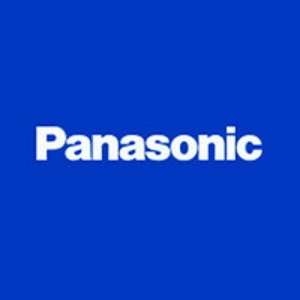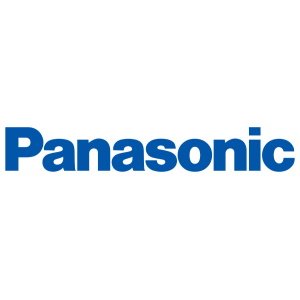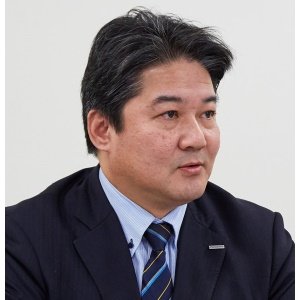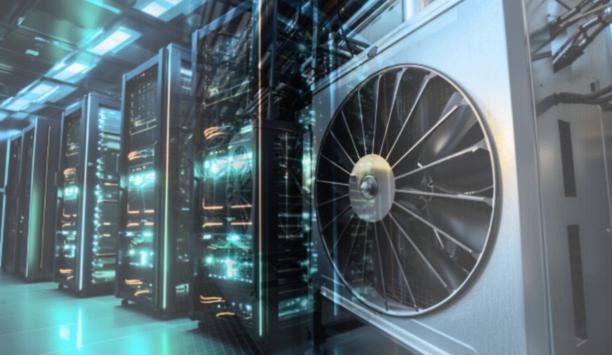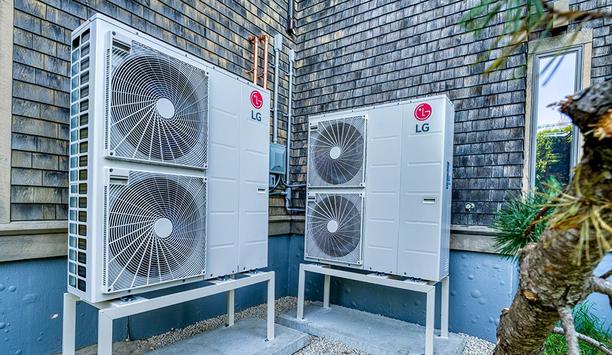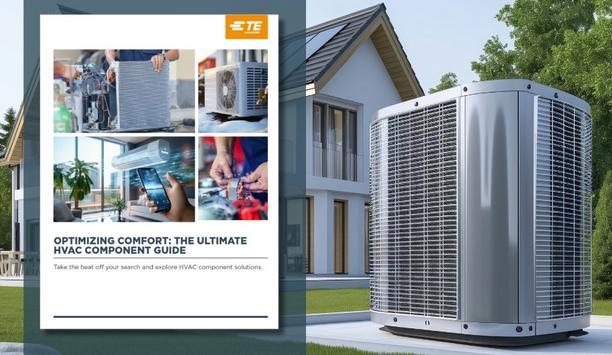Panasonic Corporation - Experts & Thought Leaders
Latest Panasonic Corporation news & announcements
At CES 2025, Panasonic unveiled an innovative new energy-efficient approach to heating, ventilation, and air conditioning (HVAC) that uses significantly less energy than conventional technologies. Building upon its rich history and the founder’s guiding vision of making today better than yesterday, and tomorrow better than today, the OASYS solution brings together two areas of focus: sustainable technology and the well-being of society. Introducing OASYS OASYS is a holistic home comfort solution created for modern, high-performance homes. As home building design has advanced with new materials and construction techniques, the standard approaches to conditioning and treating indoor air left room for innovation. Energy efficiency and cost-saving This new approach to HVAC supports the comfort and well-being of families in their home environment OASYS combines a suite of Panasonic technologies into a complete, proprietary solution to leap forward for one of the home’s most important systems. Offering cleaner, fresher air; balanced humidity; and consistent temperature control across the house, this new approach to HVAC supports the comfort and well-being of families in their home environment with greater energy efficiency and cost-saving advantages compared to traditional systems. Holistic air quality management solution “OASYS is more than an HVAC system. It’s a holistic air quality management solution to support your family’s comfort and peace of mind by delivering cleaner air and consistent temperatures throughout the whole house,” said Naoki Kamo, President of Panasonic Eco Systems of North America. Naoki Kamo adds, “Our homes are where our families flourish, and OASYS builds on Panasonic’s rich, 100-year history of inventing technologies to support the well-being and sustainability of people and society.” Superior performance and comfort Improving ventilation with outdoor air is one of the fundamental strategies for lowering concentrations According to the U.S. Environmental Protection Agency, Americans spend on average about 90% of their time indoors where the concentration of some pollutants is often two to five times higher than typical outdoor air. Improving ventilation with outdoor air is one of the fundamental strategies for lowering concentrations of indoor air pollutants – but most home heating and cooling systems do not mechanically bring fresh air into the house. Clean indoor environment OASYS starts with ventilation: the system takes in fresh outdoor air, filters it, and tempers it to the homeowner’s temperature setting. It then circulates air constantly throughout the entire house for approximately four air changes per hour while continuously monitoring the air for comfort. The result is a more comfortable, cleaner indoor environment for the family, designed with their wellness in mind. It goes beyond what homeowners can expect from conventional systems today with: Consistent Temperature Control: Maintains consistent temperature and airflow from room to room in the home, eliminating hot spots and cold corners. Balanced Air Circulation and Filtration: Provides constant, ongoing ventilation and filtration of home air to help protect from allergens and pollutants while deodorizing the air to reduce odors. Humidity Control: Delivers ongoing humidity control throughout the whole house with constant air movement and ventilation to help prevent excess moisture and mold. Easy maintenance: Requires minimal regular maintenance of a simple-to-clean air filter with no annual system maintenance necessary, and each component of the solution can be repaired or replaced individually. Quiet Operation: Runs with whisper-quiet operation, with minimal fan noise to promote more comfort for families. These features work together to improve the quality of the air inside the home, supporting the longevity of the home by helping protect against mold and excess humidity that can cause decay. Improved efficiency and economics OASYS can reduce energy consumption for heating and air conditioning by up to 53% compared to traditional HVAC According to the U.S. Energy Information Administration, the HVAC system demands more energy on average than any other system in a home through its energy consumption in space heating and air conditioning. OASYS can reduce energy consumption for heating and air conditioning by up to 53% compared to traditional HVAC systems, making it an ideal solution for those looking to reduce their home’s energy usage and lower monthly energy bills. Cost-efficient solar systems The improved efficiency offered by OASYS makes it easier and more affordable to leverage renewable energy to power the home, such as residential solar and battery storage. Decreasing the energy needs of a home’s most demanding system means that smaller and more cost-efficient solar systems can be used to power the home, expanding solar power as an option for more houses. When powered by solar panels and battery storage, homes are better able to withstand power outages, making them more resilient to weather disturbances caused by climate impacts. Accessible zero-energy home OASYS delivers these performance and efficiency gains with a similar installation cost to existing technologies in high-performance homes. Achieving this dramatic reduction in HVAC power demand is a critical step towards achieving a more affordable and accessible zero-energy home.
Airzone Control, a provider of HVAC solutions for zoning, automation, and smart control, announces a revolutionary new integration with the full portfolio of Nest™ thermostats. The integration between the Airzone Aidoo Pro and Nest smart thermostats (Nest Thermostat™ and Nest Learning Thermostat™) enables seamless bi-directional communication between the Inverter/VRF and mini-split HVAC units that are soaring in popularity. Two Expanding Categories The Inverter/VRF solutions market is expected to reach $31.9 billion by 2025, with a CAGR of 12.7% between 2021 and 2025. The global smart thermostat market is expanding in parallel and is expected to triple by 2028 as more users gravitate towards innovative solutions that provide control over a critical component of indoor spaces: heating and cooling. While these are two of the fastest-growing categories in the HVAC industry, there is a costly roadblock. The core problem arises from these two technologies growing and evolving in sole settings The core problem stems from these two technologies developing and evolving in isolated environments. These systems fail to communicate complex instructions effectively due to inadequate two-way communication. Without a solution in between, Inverter/VRF and mini-split solutions deployed with a smart thermostat are incompatible. The resulting communication breakdown between the two forces the HVAC system to revert back to single-speed operations, undermining the full potential and sophisticated features of the system. Inverter/VRF and mini-split HVAC systems Simplified, smart thermostats and HVAC units speak different languages. Since Inverter/VRF and mini-split HVAC systems are traditionally adjusted by means of their own communication protocol, and the output for the smart thermostat is a dry contact closure, the full picture is never effectively communicated back to the heating/cooling system and critical information is missing. Within this scenario, the smart thermostat is unable to provide information about how hard the system should be working or the deviation from the desired set point temperature. As a result, the system cannot modulate output to precisely match the temperature needs of an environment, and the air handling unit (AHU) becomes forced to operate at maximum capacity, creating inefficiency and discomfort. The Solution Backed By Expertise Airzone Aidoo Pro is an easy-to-install plan add-on that sits between HVAC system and Nest The Airzone Aidoo Pro is a simple-to-install system add-on that sits between the HVAC system and the Nest smart thermostat and serves as a conduit between the world of HVAC and IoT to preserve Inverter/VRF features, benefits, and functionality while meeting user demand for smart control. Airzone’s exclusive library of manufacturer-certified HVAC protocols enables full bi-directional communication between the Aidoo Pro, the HVAC solution, and the Nest Thermostat or Nest Learning Thermostat. The Aidoo Pro receives smart thermostat data, interprets it, and then sends the appropriate commands to the Inverter/VRF or mini split unit via system-specific, manufacturer-certified protocols. Inverter/VRF solution The Inverter/VRF solution continues to function at a variable rate, preserving the superior comfort and efficiency of the system. Airzone has spent decades cultivating privileged working relationships with the industry’s pioneering HVAC Inverter/VRF and mini-split manufacturers. The Aidoo Pro has manufacturer-certified HVAC protocols from all pioneering brands The Aidoo Pro has manufacturer-certified HVAC protocols from all pioneering brands, including Daikin, Fujitsu, Hitachi, LG, Mitsubishi Electric, and Panasonic. Now, with a dedicated integration with Nest, the industry’s most popular smart thermostat solutions can be connected to and properly control Inverter/VRF and mini-split HVAC systems using the Aidoo Pro. Author's quote “Our integration with the Nest smart thermostats through Aidoo Pro represents an unprecedented leap forward for our industry,” said Antonio Mediato, founder, and CEO of Airzone. “This brings together two of the industry’s fastest-growing sectors in a way that was previously thought impossible. With Nest as our valued partner, together we are setting a new standard for the industry and redefining what is possible in the world of HVAC and IoT.” Both Airzone and Google Nest will be at the upcoming AHR Expo taking place in Chicago January 22-24, 2024. For the opportunity to learn more about the Aidoo Pro/Nest integration in person, be sure to visit Airzone at AHR Expo 2024 at booth S8659 and the Google Nest Pro team at booth N1549.
Calling all plumbers and installers of heating systems! The highly anticipated Installer Show is back, and Panasonic is excited to be a part of it once again. From June 27th to 29th, 2023, make sure to visit Stand D20 at the Installer Show 2023, which is taking place at NEC, Birmingham, United Kingdom (UK), where Panasonic will be showcasing the latest innovations in low carbon heating and cooling technology, smart building monitoring tools, and PRO Partner benefits. Panasonic’s latest innovations at Installer Show 2023 At the Installer Show 2023, Panasonic has prepared a series of expert-led, short 15-minute talks At the Installer Show 2023, Panasonic has prepared a series of expert-led, short 15-minute talks that attendees wouldn’t want to miss. Starting from 10:30 am and continuing every hour until 3:30 pm each day, Panasonic’s team of specialists will cover a wide range of topics specifically designed to simplify the process of specifying, installing, and maintaining heating, cooling, and hot water systems. Here’s a sneak peek of the Expert Talks: 10.30 am - Air to Water Smart Cloud: Join them for an overview of Panasonic's Smart Cloud and Service Cloud IoT solutions. Discover how this app enables remote control and monitoring of heating, cooling, and hot water functions. It's an advanced cost and energy-saving tool that will benefit both installers and homeowners. 11.30 am – Get Wiser with Panasonic: Learn all about Panasonic's collaboration with Wiser, a smart energy monitoring system. Gain valuable knowledge on how the Panasonic account can seamlessly integrate with the Wiser home app. This integration will display the heat pump status and help homeowners save energy and costs throughout their entire home. 12.30 pm - Panasonic Aquarea L series Heat Pumps: Be the first to witness the launch of Panasonic's new Aquarea L series of air-to-water heat pumps in the United Kingdom (UK). These pumps utilize the natural refrigerant R290 and are perfect for retrofit applications and renovating homes with existing radiators. 1.30 pm – Benefits of Panasonic PRO-Partner membership: Discover everything that is needed to know about the Panasonic PRO Partner scheme, specially designed to support installers. Learn how to become a PRO Partner and unlock a complete range of benefits, including extended warranty, design tools and software, business support, and reward points, among many other exciting perks. 2.30 pm – TOTAL CAPACITY: Air-to-Water T-CAP Heat Pumps: Panasonic's experts will dive deep into the Aquarea T-Cap, a must-have for high-quality heating and cooling performance even in extreme outdoor temperatures. Whether working on retrofit projects or new builds, learn how the Aquarea T-Cap air source heat pump can deliver outstanding results. 3.30 pm - ECOi-W R290 Reversible Air-to-Water Heat Pump: Panasonic will also unveil their brand new ECOi-W range of air-to-water heat pumps, specifically designed for larger commercial applications that utilise the low GWP R290 refrigerant. Discover the reliability, quality, and full customization options that make this solution ideal for meeting customers' unique needs. Panasonic’s Technological innovations and smart building tools Jose Alves, the UK Country Manager for Panasonic comments: “Don't miss out on these invaluable insights! Join us at Stand D20 and participate in our expert-led talks at the Installer Show 2023.” He adds, “Let Panasonic empower you with the latest technological innovations, smart building tools, and partner benefits, making your job of specifying, installing, and maintaining heating, cooling, and hot water systems as simple as possible.”
Insights & Opinions from thought leaders at Panasonic Corporation
The year 2020 will forever be remembered for the global pandemic that transformed almost every aspect of our lives. COVID-19 impacted the HVAC market, as it did most other business sectors. However, HVAC also rose to a new level of prominence at the center of the pandemic, both as a potential cause of virus spread and as a source of solutions to fight the virus. This article will highlight the intersection of HVAC and COVID-19 based on articles published during 2020 at HVACinformed.com. Impact Of COVID On HVAC In an HVACInformed.com Expert Roundtable Discussion, several industry experts weighed in on the impact of the coronavirus pandemic on the HVAC market. Contractors were either not allowed to or were reluctant to enter people’s homes for sales and installation purposes, resulting in decreased demand and, ultimately, decreased sales. However, during extraordinary times, it was encouraging to see a renewed focus on something the HVAC industry has been delivering for years – comfort. Survey By Air Conditioning Contractors of America (ACCA) A survey by the Air Conditioning Contractors of America (ACCA) gathered insights on the effect the coronavirus pandemic is having on the HVAC industry. The survey in March indicated 65% of respondents expected COVID-19 to translate into long-term business viability concerns; 9% were concerned their businesses may not survive. HVAC industry employees were included among “Essential Critical Infrastructure Workers as designated by the U.S. Department of Homeland Security (DHS). Roles Of Ventilation HVAC technicians and companies have risen to the challenges of social distancing and wearing masks There was increasing awareness of the role of air ventilation in fighting the virus. There has been renewed interest in air filtration, not to mention the benefits of UV-C to mitigate to mitigate germs circulating in the air. Furthermore, HVAC technicians and companies have risen to the challenges of social distancing and wearing masks as they are invited into customers’ homes and businesses during the pandemic. Resources To Maximize HVAC Systems ASHRAE developed resources to help maximize how HVAC systems can have a positive impact as the coronavirus spreads. The society recommends strategies such as dilution ventilation, laminar and other in-room flow regimes, differential room pressurization, personalized ventilation, source capture ventilation, filtration (central or unitary), and ultraviolet germicidal irradiation (UVGI) (upper room, in-room, and in the airstream). Ultraviolet Light 2020 saw an unprecedented surge in demand for germicidal solutions. UV-C light is a short-wavelength, ultraviolet light that kills germs by inactivating a microorganism’s DNA. Although UV-C is effective in killing other varieties of coronaviruses, such as SARS and MERS, scientists do not yet know about the impact of UV-C on COVID-19. The Tennessee Valley Authority (TVA), the power provider in the United States, is offering incentives to businesses and schools to install UV-C germicidal lights to fight germs in indoor air. Role Of HVAC In Virus Spread Whether HVAC could contribute to virus spread was a repeated topic of interest. One theory goes that air conditioning, by removing humidity from the air, may enable infectious droplets to linger longer than they would outdoors or in another space where humidity is higher. More humidity can weigh down viral droplets as they float through the air. Minimize The Spread Of The Virus ASHRAE opposes the advice and asserts that keeping air conditioners on during this time can help control the spread of the virus Does it make sense, therefore, to turn the AC off to minimize the spread of the virus? according to ASHRAE, which officially opposes the advice not to run residential or commercial HVAC systems. In fact, ASHRAE asserts that keeping air conditioners on during this time can help control the spread of the virus. Also related to virus spread, the Centers for Disease Control and Prevention (CDC) reported on a case under the title “COVID-19 Outbreak Associated with Air Conditioning in a Restaurant, Guangzhou, China, 2020.” Research Trends And The Future The need for more research will continue after the pandemic. Broadly speaking, we know that crowded spaces with poor ventilation and/or low humidity levels tend to promote virus spread, that filtration can help to remove the virus, and that measures such as UV-C radiation can help to disinfect indoor air. More study is needed, and more time is needed to complete those studies and expand our base of knowledge on this important subject. Preventing COVID Panasonic has conducted research that verifies that hydroxyl radicals contained in water can inhibit the novel coronavirus (SARS-CoV-2). The nano-sized electrostatic atomized water particles are generated by applying a high voltage to moisture in the air. Here is a statement from the company, "While Panasonic makes a wide range of products that generate these types of free radicals, none of these products has been tested for efficacy in the inhibition of the SARS-CoV-2 virus on surfaces or in the air.” Innovative approaches to fighting COVID include HVAC-equipped smart, glass-paneled bus stop shelters that that help to prevent pandemic spread in the Seongdong district in northeastern Seoul, South Korea. Ventilation And Air Filtration As schools worked to reopen safely in the midst of a global pandemic, HVAC was at the center of the mission. Adequate ventilation and effective air filtration are critical elements to ensure safe indoor air quality for educational institutions. Many schools are housed in older buildings that may not have been adequately maintained. Transforming them to address the new challenges of minimizing exposure to the novel coronavirus is that much more difficult.
Leveraging Radiant And Hydronics To Help Achieve Decarbonization Goals
DownloadSealed Connectors In Harsh Environments
DownloadPowering And Cooling Next Generation Data Centers
DownloadDebunking Myths To Promote A Bright Future For Heat Pumps
DownloadOptimizing Comfort: The Ultimate HVAC Component Guide
Download

















